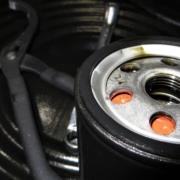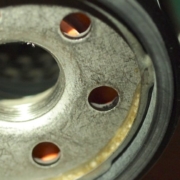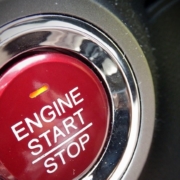NAPA Know How: Changing Your Oil: The Essentials
[ad_1]
Changing your oil regularly is the cornerstone of good car maintenance. It’s not the cleanest job, but just about anyone can do it. So read up on some tips and tricks to make the job easier, then gather the following tools and supplies and get to it.
Safety First
Accessing your car’s oil drain plug and oil filter almost always requires getting under the vehicle. Putting safety first only requires a few simple items. Wearing the appropriate eye gear and gloves will ensure that debris stays out of your eyes and you don’t cut your hands on a jagged edge. If you are lucky you can access the plug and oil filter all four tires on the ground, otherwise you will to safely jack up the vehicle. If you aren’t comfortable working underneath your car, you can always take it to your local NAPA AutoCare experts.
Keep It Clean
Have at the ready a drain pan to catch the old oil, spill pads to catch what splatters out of the drain pan, and rags for your hands, tools, the drain plug … basically, have plenty of rags.
Tools
Check whether you need additional tools to remove anything covering the drain plug (most don’t). Have a ratchet and socket or wrench that perfectly fits the drain plug or you run the risk of rounding out the head of the bolt. Also, don’t use an impact gun to remove or install the plug, or you might strip the bolt or engine pan or both, leaving you with a much bigger repair.
Filter Extras
Always change your filter when you change your oil. So have at the ready a new filter (make sure it’s compatible with your engine), and filter wrench for getting the old one off. You don’t need to use the wrench to put it back on, heavy hand-tight will do! You’ll thank yourself at the next oil change.
Things to Make Your Life Easier
A funnel is strongly recommended. It will help you transfer old oil out of the pan and new oil into the engine. Additionally, a light source and creeper (or a panel of cardboard) will go a long way in making the process more comfortable. Don’t forget the gloves or else have some very good soap available.
Oil
You have many different choices here, so it’s important to evaluate your needs and consult your owner’s guide or a professional before deciding. Fully synthetic oil definitely has its advantages, but it’ll cost you. Factors such as the temperatures in your area, what you’re asking of your engine performance-wise, the age of your vehicle, manufacturer specifications and more will impact what the right choice is for you. Double check the amount of oil you need, so you don’t end up over or under filled.
A Plan
Make sure you know what happens when the oil change is done. You’ll need a receptacle with a secure lid so the oil doesn’t slosh out when transported. One trick is to pour the used engine oil from the pan into the now empty new oil bottles. This way, you can put lids back on them and take the used oil to your nearest auto store for disposal.
Totally easy, right? With an eye toward safety, a solid plan and a little preparation, changing your oil is one of the simplest yet most impactful things you can do for your car. And with most vehicles requiring at least two changes a year, it’s a handy skill to tick off the list.
Check out all the maintenance parts available on NAPA Online or trust one of our 16,000 NAPA AutoCare locations for routine maintenance and repairs. For more information on what you need to change your engine’s oil and filter, chat with a knowledgeable expert at your local NAPA AUTO PARTS store.
Photos courtesy of Blair Lampe.














